
Fast, affordable Internet access for all.

A new $4 million project funded by the Appalachian Regional Commission (ARC) and the U.S. Economic Development Administration will help bring affordable fiber broadband to long underserved parts of West Virginia.
The project primarily targets the rural counties of Randolph and Tucker, long stuck on the wrong side of the digital divide.
The RFP for the open access middle- and last-mile file project was issued last summer, seeking partners to help maintain the network and manage access leases in partnership with the Woodlands Development Group (WDG), which will own the finished network.
“The Route 33 Broadband Deployment Project will deploy backbone fiber from Elkins along Route 33 through Bowden, north to Harman, up to Canaan Valley, and ending in Davis, establishing last-mile broadband access to 40 businesses, and enabling future last-mile projects to serve at minimum 480 households and 25 additional businesses located within 1,000 ft of the backbone fiber,” the RFP states.
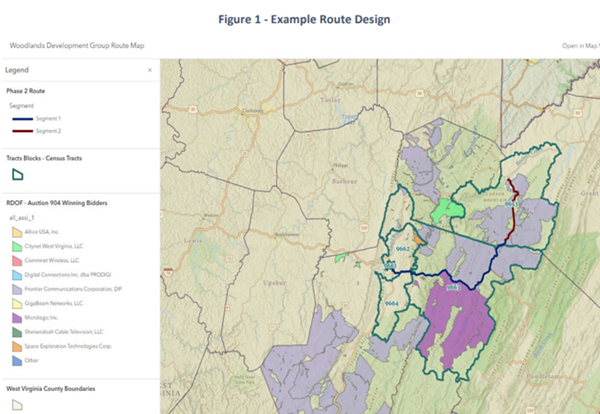
WDG, a 501(c)(3), had already been awarded a $1.7 million grant laying the foundation of the effort courtesy of 2021 COVID relief legislation (courtesy of the American Rescue Plan Act). The remainder of the $4 million project will be funded by the Appalachian Regional Commission and the U.S. Economic Development Administration.
Selma, Alabama – and parts of 16 other communities in eight different counties – will soon be connected to a new, $230 million open access fiber network that aims to bring affordable broadband to historically marginalized sections of the Yellowhammer State.
The deployment comes courtesy of a public private partnership (PPP) the city has struck with Meridiam Infrastructure and Meridiam-owned YellowHammer IT, an agreement that will expand fiber access across Alabama’s Black Belt region on the back of a $5.1 million Capital Projects Fund (CPF) grant.
At a March 2 press conference, Selma Mayor James Perkins Jr. said the partnership with Meridiam and Yellowhammer should result in fiber access being deployed to 85 percent of city homes and businesses, regardless of residents’ income levels, with $45 million of the $230 million investment dedicated to bring fiber service to Selma, the “Queen City of the Black Belt.”

“High-speed reliable broadband is no longer nice to have. Today, it’s as important as gas, water, and electricity,” Perkins stated at the event. “In our increasingly digital society, cities without access to fiber broadband risk falling behind. It’s critical that the City of Selma makes fiber broadband accessible citywide by building utility-like infrastructure that serves our residents’ needs today and for generations to come.”
Ottawa County, Michigan officials say they’ve struck a new public private partnership (PPP) with 123Net on a $25 million fiber deployment that aims to bring more uniform – and affordable – broadband access to Michigan’s seventh largest county by population.
The Ottawa County Board of Commissioners voted last month to approve a master agreement and letter of intent with 123Net.
The finalized agreement calls for 123Net to spend two years deploying 400 miles of new fiber infrastructure as part of an open access, carrier neutral fiber network to bring new competition – and affordable fiber – to 10,000 county residents and businesses.
The $25 million network will be funded by $14 million from Michigan’s Realizing Opportunity with Broadband Infrastructure Networks (ROBIN) grant program; $7.5 million from Ottawa County’s American Rescue Plan Act funds, and $3.5 million in private funding from 123NET.
“We’re at an interesting time in broadband deployment as there are a number of unique funding programs that counties and municipalities can access,” said Chuck Irvin, Executive Vice President of 123NET, said in a statement. “123NET is proud to be part of this exciting project.”
At the same time, county officials say they’ve struck a separate deal with Tilson Technology to build new wireless towers to deliver fixed wireless service to an undetermined number of rural county residents for whom deploying fiber is cost prohibitive.
Eagle, Idaho is preparing to connect the first of the city’s 32,000 residents to a new, municipally-owned open access fiber network. The project, which the city says will take between five to 10 years to complete, is being heavily funded by federal grants, and aims to meaningfully boost broadband competition – and affordable access – citywide.
ISLR profiled Eagle’s efforts last year, noting that the $5 million initial downtown fiber loop was jump-started with the help of the city’s $6.7 million allotment of American Rescue Plan Act (ARPA) funding.
Roughly 300 homes and 30 businesses should be able to connect to the network within the next six months, the city now says. More than 30 residential subdivisions are in the early deployment phase, and the project will expand steadily over the next decade, funded by revenues from existing subscribers and future state and federal grant opportunities.
Like countless American communities, Eagle suffers from a notable lack of competition between regional phone giant Lumen (formerly Centurylink, now operating under the Quantum brand), and regional cable company CableOne (under the Sparklight brand). That muted competition results in high prices, spotty access, slow speeds, and substandard customer service.
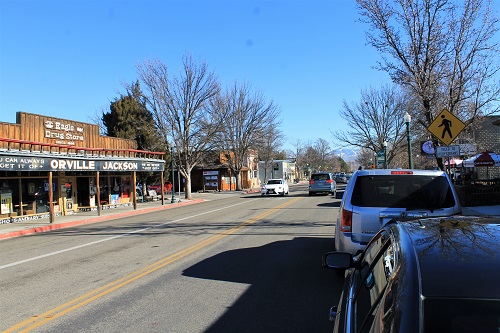
Enter Eagle’s open access fiber network, which will allow numerous ISPs to compete in layers, driving down market entry costs for providers and broadband access prices for consumers. City leaders say the aim is to offer symmetrical gig speed service for between $50 and $60 to residents, and $150 per month to local businesses.
Boulder, Colorado officials have issued a new request for proposal (RFP) seeking partners for their ongoing quest to deliver affordable fiber to the city of 104,000.
According to an announcement by Boulder leaders, the city is offering potential partners a long-term lease of city-owned dark-fiber backbone infrastructure and a right of way agreement for the construction and operation of a network delivering Internet service offering 1 Gbps or more to all Boulder homes and businesses. Responses are due by March 1.
When we last checked in with Boulder in April of last year, the city was putting the finishing touches on a $20 million, 65-mile dark fiber backbone, funded by the competitive sale of its 2018 Broadband Taxable Certificates of Participation (COPs). The competitive sale was used to ensure that Boulder could get the lowest interest rates possible in financing the construction of the backbone.
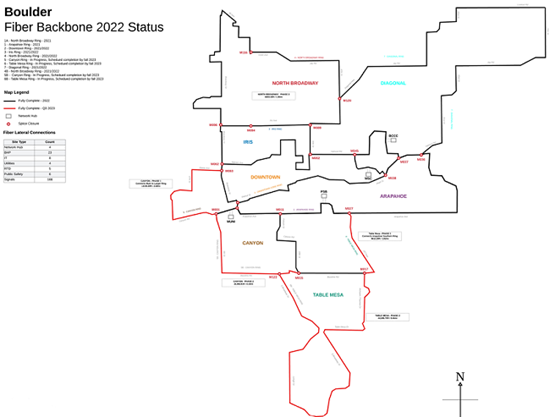
While the process was technically started back in 2018, and then delayed by the pandemic, city officials remained committed to moving the project forward.
“What we are trying to do in Boulder – if we can find the right partner or partners – is about creating more competition; increase the competitive marketplace locally,” project manager and independent consultant Tim Scott told ILSR last year.
Like so many U.S. communities, Boulder sees limited competition between the local cable company (Comcast) and the local phone company (Centurylink/Lumen) resulting in slow speeds, spotty coverage, high prices, and substandard customer service.
As the new year begins, the Institute for Local Self-Reliance (ILSR) announced today its latest tally of municipal broadband networks which shows a dramatic surge in the number of communities building publicly-owned, locally controlled high-speed Internet infrastructure over the last three years.
Since January 1, 2021, at least 47 new municipal networks have come online with dozens of other projects still in the planning or pre-construction phase, which includes the possibility of building 40 new municipal networks in California alone.
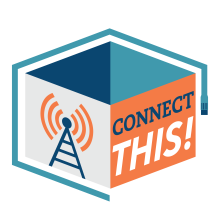
Join us Tuesday, January 16th at 2pm ET for the latest episode of the Connect This! Show. Co-hosts Christopher Mitchell (ILSR) and Travis Carter (USI Fiber) will be joined by regular guests Doug Dawson (CCG Consulting), Kim McKinley (UTOPIA Fiber), and special guest Roger Timmerman (Executive Director UTOPIA Fiber) to prognosticate all of the broadband things for 2024: will ACP get renewed? Which states will get BEAD right, and which are showing signs of cracking under the pressure? What did we see at CES that will impact the broadband market? Is the fiber market going to pause? Tune in for titillating discussion on these topics and many more.
Email us at broadband@communitynets.org with feedback and ideas for the show.
Subscribe to the show using this feed or find it on the Connect This! page, and watch on LinkedIn, on YouTube Live, on Facebook live, or below.
Officials in Chelan County, Washington say they are making meaningful progress on its decades-old plan to deliver affordable broadband to all 79,000 county residents. After securing financing for its latest planned fiber expansion, the Chelan County Public Utility District (PUD) says it’s exploring options to help finish the job of equitable, affordable, full-county deployment.
Chelan County PUD was formed in 1936 by local voters frustrated by costly, spotty access to electricity. Like so many utilities, cooperatives, and communities, those rural electrification efforts have helped inform the quest for ubiquitous, affordable broadband access almost a century later.
In 2001, the Chelan PUD began building a county-wide wholesale fiber network at a time when PUDs in the state were restricted from offering retail telecommunications services. (Those state statutes were rolled back by state lawmakers in May 2021). The network currently covers roughly 81% of the county, reaching about 39,000 subscribers; 21,000 of which get broadband service through one of the county’s five local ISP partners.
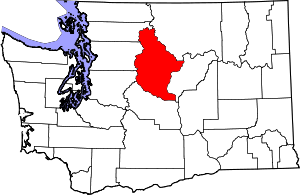
An ongoing network expansion plan aims to extend the reach of the county’s fiber network to roughly 42,000 homes and businesses. Those efforts are currently being funded by some of the $14.9 million in American Rescue Plan Act (ARPA) funds received by the county, as well as the Chelan PUD's Public Power Benefit Program, financed by surplus wholesale power sales.
In 2021, California passed Senate Bill 156, an ambitious plan allocating $6 billion to shore up affordable broadband access throughout the state.
Among the most notable of the bill’s proposals was a plan to spend $3.25 billion on an open-access statewide broadband middle-mile network backers say could transform competition in the state.
An additional $2 billion has also been earmarked for last mile deployment. Both components will be heavily funded by Coronavirus relief funds and federal Broadband Equity, Access, and Deployment (BEAD) subsidies as well as California State Government grants – with all projects to be finished by December 2026 as per federal funding rules.
But while California’s proposal has incredible potential, activists and digital equity advocates remain concerned that the historic opportunity could be squandered due to poor broadband mapping, a notable lack of transparency, and the kind of political dysfunction that has long plagued the Golden State.
Massive Scale, Big Money, Endless Moving Parts
Still, California’s prioritization of open access fiber networks could prove transformative.
Data routinely indicates that open access fiber networks lower market entry costs, boost overall competition, and result in better, cheaper, faster Internet access. Unsurprisingly, such networks are often opposed by entrenched regional monopolies that have grown fat and comfortable on the back of muted competition.

Join us Wednesday, November 15th at 2pm ET for the latest episode of the Connect This! Show. Co-hosts Christopher Mitchell (ILSR) and Travis Carter (USI Fiber) will be joined by regular guests Doug Dawson (CCG Consulting) and Kim McKinley (UTOPIA Fiber) to talk about the FCC’s digital discrimination docket, open access fiber in Canada, progress on community broadband in Chelan, Washington, and a couple bonus topics to boot.
Email us at broadband@communitynets.org with feedback and ideas for the show.
Subscribe to the show using this feed or find it on the Connect This! page, and watch on LinkedIn, on YouTube Live, on Facebook live, or below.